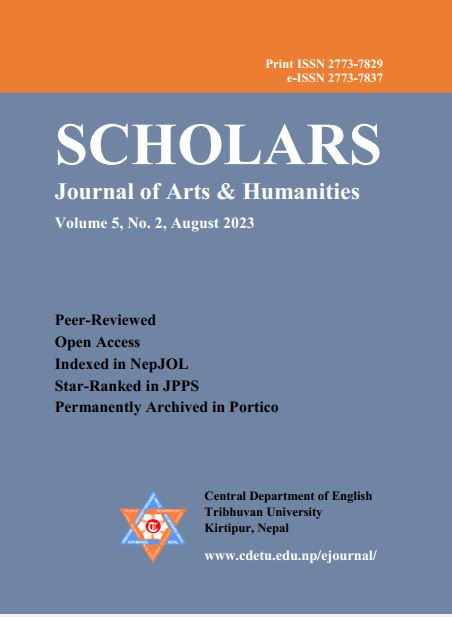Unbodying and Rebodying the Self in BP Koirala’s Sumnima
DOI:
https://doi.org/10.3126/sjah.v5i2.57496Keywords:
Self, abjection, unbodying, rebodying, feminine impulseAbstract
The self can realize its presence only through the material body that physically grounds in the self in the world. However, the stoic understanding of life negates the existence of body since it is the source and goal of pleasure. In the East, the Vedic knowledge implies that one arrives at the awakening of critical rationality through the negation of materiality of the existence, thereby reaching the depth of meaning in human existence. In other words, the self attains the enlightenment through continual denial of the body to the soul. BP Koirala’s Sumnima (1969) argues against the stoic claims of the Brahministic scriptures of the Orient by depicting troublesome conjugal life of a renowned Vedic scholar and practitioner. Still searching for the remedies of childless conjugal life in the Vedic rituals, Somdatta and Puloma simply pass their days in their futile attempt to have a child. The indigenous Kirat people have a solution to such a situation that requires the person to value the body. Learning from Sumnima, Somdatta rebodies his unbodied self and embraces the pleasures of life as the basic ingredient and impetus as such. Koirala aesthetically synthesizes both the Brahministic and indigenous ways of approaching the body in quest of equilibrium between the masculine and the feminine impulses of unbodying and rebodying the self respectively. This study employs Julia Kristeva’s theory of abjection to read the novel and explores Koirala’s vision of the golden mean.
Downloads
Downloads
Published
How to Cite
Issue
Section
License

This work is licensed under a Creative Commons Attribution 4.0 International License.
© Central Department of English, Tribhuvan University and Authors




